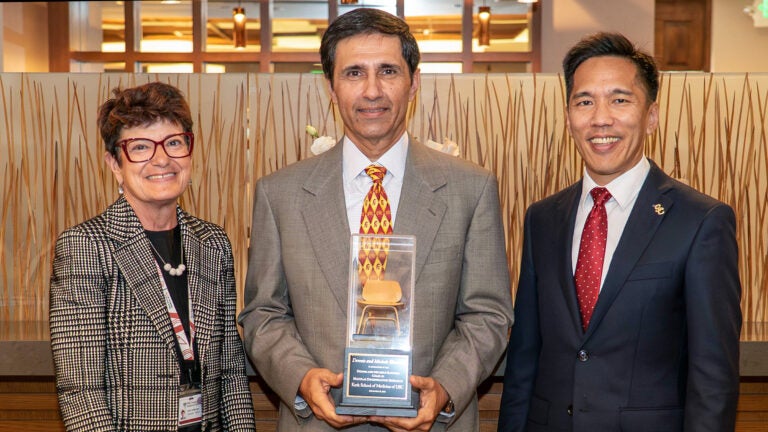A comprehensive literature review from USC and UCLA researchers analyzed the evidence on viscoelastic testing, which can help assess blood clotting during postpartum hemorrhage, and explored the path to its adoption in the U.S.
Category: Uncategorized
Harnessing data to end hospital gridlock and streamline surgery
New data-driven models developed by a USC and Carnegie Mellon-led team could reduce surgery delays, cut hospital costs by up to 60% and improve access to surgery.
USC-led team makes major advance toward building a synthetic kidney
Scientists create “assembloids,” the most mature and complex kidney structures ever grown in a lab and a tool for developing new therapies.
Stem cell transplant for stroke leads to brain cell growth and functional recovery in study
Insights about brain cell damage after stroke and repair after transplant could pave the way for therapies that extend the treatment window, a USC lab study reveals.
Keck Medicine of USC debuts new, state-of-the-art Pasadena location
The newest addition to the USC health system is the university’s largest and most advanced outpatient location.
Mark Humayun installed as Slivinski Chair in Macular Degeneration Research
Mark Humayun, center, is congratulated by Dean Carolyn Meltzer of the Keck School of Medicine of USC and USC Interim President Beong-Soo Kim. (Photo/Dean Russell)
University
Mark Humayun installed as Slivinski Chair in Macular Degeneration Research
The noted ophthalmologist and University Professor is the co-inventor of Argus II, which offers functional sight to people with complete retinal blindness.
Mark Humayun on Tuesday was installed as the Dennis and Michele Slivinski Chair in Macular Degeneration Research. At the Keck School of Medicine of USC, Humayun is University Professor of Ophthalmology, Stem Cell Biology and Regenerative Medicine and Biomedical Engineering, as well as co-director of the USC Roski Eye Institute, director of the USC Institute for Biomedical Therapeutics, and director of the USC Sensory Science Institute.
Humayun is the co-inventor of Argus II, which offers functional sight to those with complete retinal blindness. He was elected to the prestigious National Academy of Medicine and National Academy of Engineering for his pioneering work to restore sight.
$10 million gift launches Renaud Family Business of Healthcare Innovation Program
The gift from Ronald and Marianne Renaud to USC Marshall will empower students, faculty and businesses to tackle society’s most pressing health and wellness challenges.
Keck School of Medicine receives national honor for community engagement
The Association of American Medical Colleges recognizes the school for outreach, education, service, research and increasing access to cutting-edge clinical care.
Education gap linked to differences in biological aging
USC research finds that Americans with less education are aging faster biologically than their peers with more schooling. The gap has grown over the last 30 years.
USC researchers develop brain imaging method to reveal hidden vascular changes with aging
The technique reveals how tiny blood vessels in the brain pulse with each heartbeat — changes that may hold clues to aging and diseases such as Alzheimer’s.